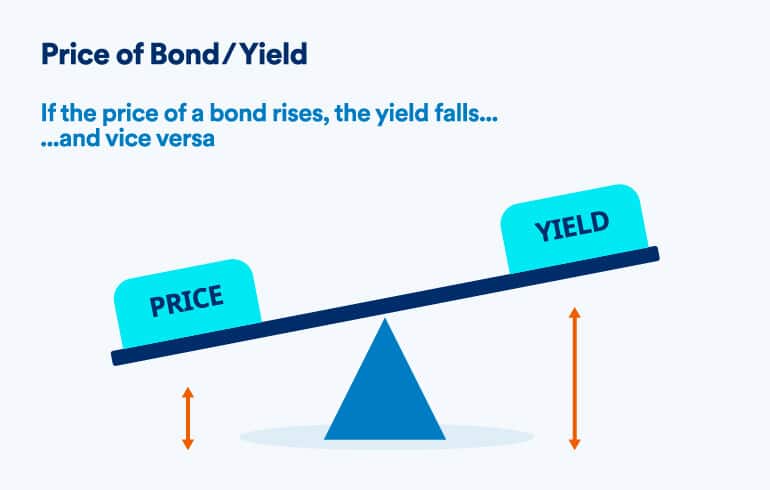Fixed income investments represent a cornerstone of well-diversified investment portfolios, offering investors a blend of stability, predictability, and reduced risk in comparison to their equity counterparts. At their core, these investments are characterized by regular income streams, typically in the form of interest or dividends, and a predefined schedule for the return of the principal amount at maturity. This category encompasses a broad spectrum of securities, including government and corporate bonds, municipal bonds, certificates of deposit (CDs), and fixed income funds, each catering to different investor needs and risk tolerance levels. The strategic incorporation of fixed income investments into a portfolio not only mitigates volatility but also ensures a steady flow of income, making it an indispensable component for investors seeking balanced growth and income preservation. As we delve into the nuances of fixed income investments, we aim to explore their diverse types, inherent characteristics, potential risks, and the pivotal role they play in achieving financial security and investment goals.
Understanding Fixed Income Investments
Understanding fixed income investments requires delving into their fundamental principle: these are investments that provide investors with a regular and predictable stream of income, usually through interest or dividends. Unlike stocks, where dividends can fluctuate and principal appreciation is a primary goal, fixed income investments promise to return the original investment (the principal) at a predetermined maturity date, alongside periodic interest payments. This category includes a variety of securities, such as bonds issued by governments, municipalities, and corporations, as well as certificates of deposit and fixed income funds. The allure of these investments lies in their ability to offer financial stability and income predictability, making them an essential part of a diversified investment strategy, particularly for those seeking to mitigate risk and secure a steady income flow.
Types of Fixed Income Investments
Fixed income investments encompass a broad range of securities, each offering distinct features, risk profiles, and benefits suited to different types of investors. Understanding these varieties is crucial for constructing a diversified investment portfolio that aligns with one’s financial goals and risk tolerance.
- Government Bonds: These are issued by national governments and are considered among the safest fixed income investments due to their backing by government resources. U.S. Treasury bonds, notes, and bills are prime examples, offering low-risk returns. Similarly, sovereign bonds from other countries provide an opportunity for geographic diversification.
- Corporate Bonds: Issued by companies to raise capital, corporate bonds typically offer higher yields than government bonds, reflecting the greater risk associated with corporate financial health. They range from investment-grade bonds, which have a lower risk of default, to high-yield (or “junk”) bonds, offering higher returns at increased risk levels.
- Municipal Bonds: Issued by states, cities, and other municipal entities, these bonds often provide tax-free interest income, making them particularly attractive to investors in higher tax brackets. They fund public projects like schools and infrastructure, combining investment returns with the benefit of contributing to community development.
- Certificates of Deposit (CDs): CDs are time deposits offered by banks with fixed terms and interest rates. They are among the safest investments, typically insured by the Federal Deposit Insurance Corporation (FDIC) up to certain limits, but they offer lower returns compared to other fixed income securities.
- Fixed Income Funds: These funds invest in a diversified portfolio of fixed income securities, including bonds and CDs. Managed by professionals, they allow investors to diversify across different types of fixed income investments with a single purchase. Fixed income funds vary in their focus, investing in specific types of bonds or pursuing strategies suited to different market conditions.
Each type of fixed income investment offers a unique balance of risk and return, making it important for investors to carefully consider their options and how each fits into their overall investment strategy. Whether seeking stability, tax advantages, or higher yields, there’s a fixed income investment to meet almost every need.
Evaluating Fixed Income Investments
Evaluating fixed income investments involves a careful analysis of various factors that influence their risk and return profiles. Investors must consider these elements to select investments that align with their financial goals, risk tolerance, and investment horizon. Here’s a closer look at the key aspects to evaluate:
- Credit Risk: This refers to the risk that the issuer will default on their obligations to pay interest and return the principal. Government bonds are generally considered low-risk, while corporate bonds can range from low (investment-grade) to high (high-yield or “junk” bonds) credit risk. Assessing the issuer’s credit rating, provided by agencies like Moody’s, S&P, and Fitch, can help gauge this risk.
- Interest Rate Risk: The value of fixed income securities tends to move inversely to interest rates. When rates rise, bond prices fall, and vice versa. This risk is particularly relevant for long-term bonds, as they are more sensitive to rate changes. Evaluating a bond’s duration—a measure of its sensitivity to interest rate changes—can help investors understand this risk.
- Yield: The yield of a fixed income investment indicates the return an investor can expect to earn if the bond is held to maturity, considering its current price, interest payments, and time to maturity. Higher yields are typically associated with higher risks. Comparing the yield to benchmark rates and similar securities can provide insight into its relative attractiveness.
- Inflation Risk: Inflation can erode the purchasing power of fixed payments from bonds over time. Inflation-protected securities, such as Treasury Inflation-Protected Securities (TIPS) in the U.S., can mitigate this risk by adjusting the principal value of the bond for inflation.
- Liquidity: Liquidity refers to the ease with which an investment can be bought or sold in the market without affecting its price. Some fixed income securities, like widely traded government bonds, are highly liquid, while others, such as certain municipal or corporate bonds, may be less so.
- Tax Considerations: The tax treatment of income from fixed income investments can vary. For example, municipal bonds often offer tax-free interest at the federal level, and sometimes state and local levels, making them attractive to investors in higher tax brackets.
The price and the yield of a bond are moving in opposite directions:

When a bond’s price increases above its face value (a situation known as trading at a premium), its yield to maturity decreases because the fixed interest payments are now spread over a higher purchase price. Conversely, if the bond’s price falls below its face value (trading at a discount), its yield to maturity increases for the opposite reason.Interest rates play a pivotal role in this relationship. When market interest rates rise, new bonds are issued with higher coupon rates to reflect the current interest rate environment, making existing bonds with lower coupons less attractive. Hence, the prices of existing bonds fall, and their yields rise. When interest rates fall, the opposite happens: existing bonds with higher coupons become more valuable, their prices rise, and their yields fall.
By thoroughly assessing these factors, investors can make informed decisions about which fixed income investments are best suited to their needs. Balancing the trade-offs between risk and return while considering the investment’s role within the broader portfolio is key to achieving a well-rounded investment strategy.
Conclusion
In conclusion, fixed income investments play a pivotal role in diversifying investment portfolios, offering a balance between risk and return that caters to a wide array of investment strategies and objectives. From government and corporate bonds to municipal bonds, certificates of deposit, and fixed income funds, these securities provide options for steady income, capital preservation, and risk management. However, it’s crucial for investors to understand the various risks associated with fixed income investments, including interest rate risk, credit risk, inflation risk, and liquidity risk, among others. By carefully evaluating these factors, investors can make informed decisions that align with their financial goals, risk tolerance, and investment horizon.
A thorough assessment and understanding of fixed income securities not only enhance portfolio diversification but also contribute to achieving financial stability and growth over the long term. Investors should consider their own financial situation, consult with financial advisors, and conduct comprehensive research before diving into fixed income investments.
Summary Table of Fixed Income Investments
| Type of Investment | Risk Profile | Potential Returns | Key Considerations |
|---|---|---|---|
| Government Bonds | Low | Low to Moderate | Safe, backed by government, sensitive to interest rate changes |
| Corporate Bonds | Medium to High | Moderate to High | Higher yields, subject to credit risk |
| Municipal Bonds | Low to Medium | Low to Moderate | Tax advantages, varying levels of risk and return |
| Certificates of Deposit (CDs) | Very Low | Low | FDIC insured up to certain limits, fixed interest rate |
| Fixed Income Funds | Varies | Varies | Professional management, diversified holdings, liquidity varies |
This table encapsulates the essential characteristics and considerations of the primary types of fixed income investments, providing a quick reference for investors seeking to navigate the complexities of the fixed income market. Each investment type offers unique advantages and challenges, underscoring the importance of a tailored approach to investment selection based on individual financial goals and risk tolerance.
